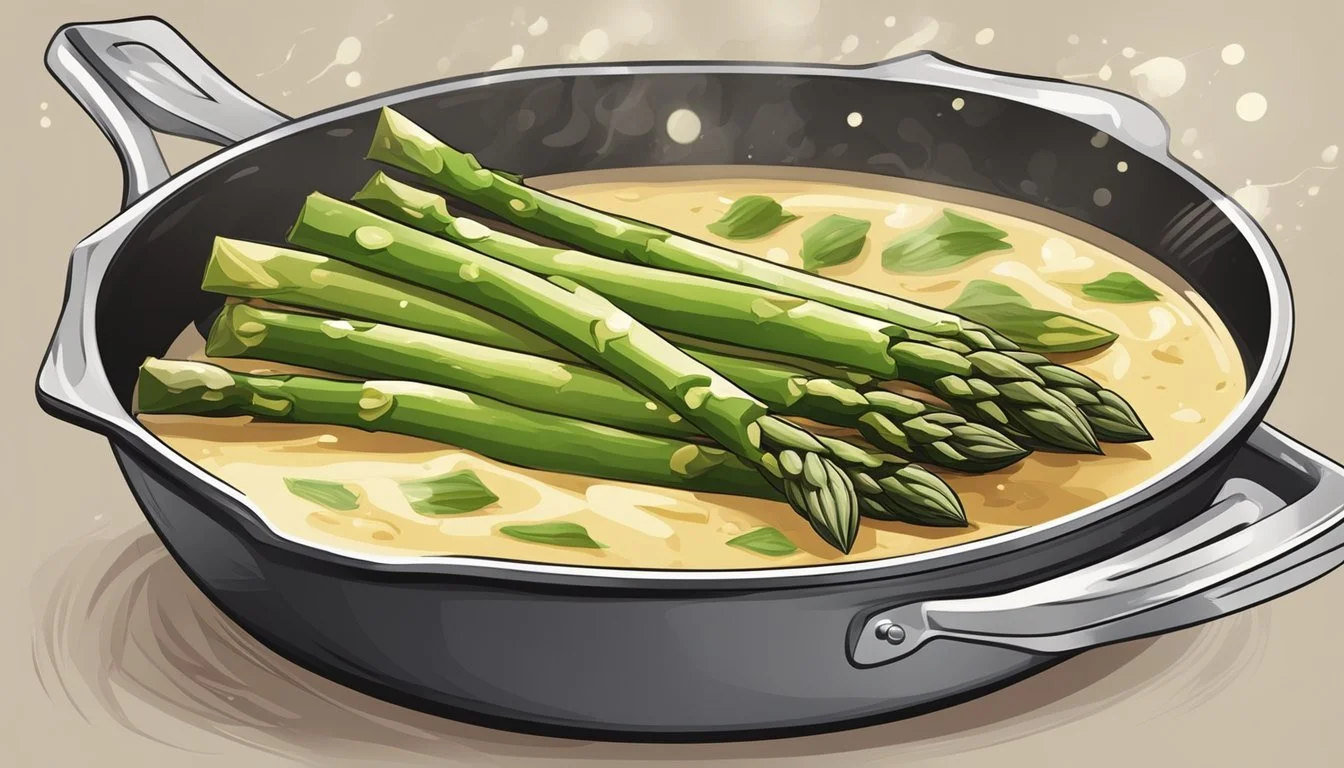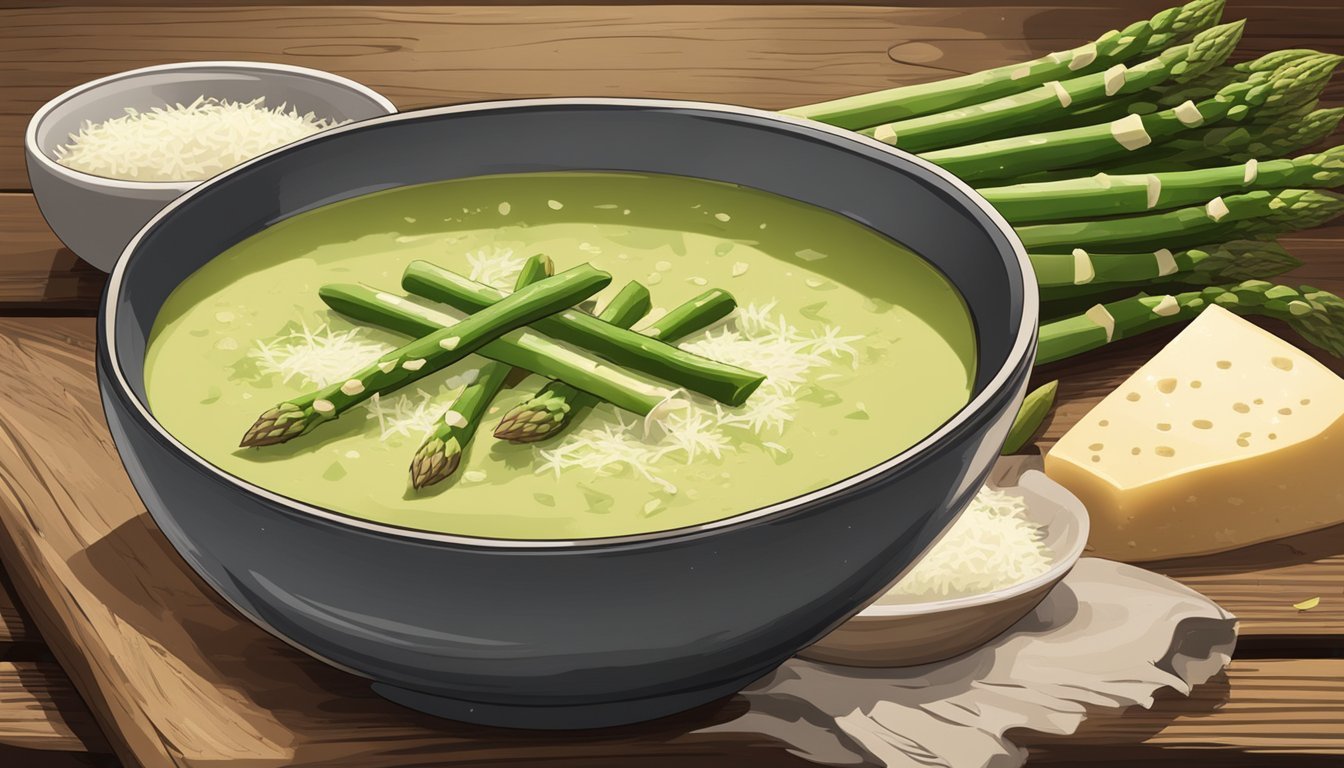5 Delicious Ways to Cook with Asparagus
Expert Tips and Easy Recipes
Asparagus, a versatile and nutrient-rich vegetable, can be a delightful element in many meals, offering a range of textures and flavors that suit various cooking methods. As spring ushers in a fresh harvest, incorporating asparagus into your cooking repertoire not only enhances the taste of your dishes but also boosts their nutritional value.
Discovering the many ways to cook asparagus can transform this simple vegetable into a standout component of any meal. Whether roasting, grilling, sautéing, or even pureeing into soups, asparagus can cater to diverse culinary preferences and dietary needs. This article will explore five delicious ways to bring out the best in your asparagus, making it a beloved addition to your kitchen staples.
1) Grilled Asparagus with Lemon
Grilled asparagus with lemon is a simple and flavorful way to enhance the natural taste of asparagus.
Start by preheating the grill to 400 degrees F.
Toss the asparagus in olive oil, ensuring each spear is well-coated.
Sprinkle with salt, pepper, and minced garlic.
Grill the asparagus directly on the grill grates for 8-10 minutes, turning them occasionally.
For an added burst of flavor, squeeze fresh lemon juice over the asparagus just before serving.
This light and zesty dish pairs well with grilled fish or chicken.
Serve hot or at room temperature for the best experience.
2) Asparagus Risotto
Asparagus Risotto combines creamy rice with fresh asparagus for a delightful dish. To start, heat olive oil in a skillet or Dutch oven over medium heat. Add finely chopped leeks or onions, cooking until they are soft. Stir in minced garlic for added flavor.
Next, add Arborio rice and cook it briefly until it starts to turn translucent. Begin adding warm stock one ladleful at a time, stirring continuously. As each ladleful is absorbed, add more until the rice is creamy and cooked to al dente.
Blanch asparagus in boiling water for a few minutes until tender-crisp, then add to the risotto. Some recipes suggest pureeing a portion of the asparagus with basil and adding it back to enhance the flavor and texture.
Finish the dish by stirring in freshly grated Parmesan cheese and a knob of butter for richness. Season with salt and pepper to taste. The result is a sophisticated risotto that pairs well with grilled chicken or fish.
3) Asparagus and Prosciutto Tart
An asparagus and prosciutto tart makes for a delightful and elegant dish. The combination of tender asparagus and salty prosciutto wrapped in flaky puff pastry is easy yet impressive.
Start by preheating the oven to 400°F. Roll out chilled puff pastry on a floured surface.
Transfer the dough to a parchment-lined baking sheet. Score the edges with a knife, creating a 1-inch border without cutting through completely.
Spread a layer of herbed cheese or sundried tomato pesto over the center. Next, arrange the asparagus spears evenly across the tart.
Place slices of prosciutto in between the asparagus spears. This will allow the prosciutto to crisp up nicely as it bakes.
Drizzle the tart with olive oil and season with salt and pepper.
Bake for 25-30 minutes until the pastry is golden and the prosciutto is crisp. Remove from the oven and let it cool for a few minutes before slicing.
For added freshness, top the tart with a mixture of arugula, basil, lemon juice, and a drizzle of olive oil. This enhances the flavors and adds a nice texture contrast.
Serve the tart warm or at room temperature. It's perfect for brunch, lunch, or as an appetizer at a dinner party.
4) Asparagus Soup with Parmesan
Asparagus soup with Parmesan is a delightful and elegant dish. It combines the natural earthiness of asparagus with the rich, nutty flavor of Parmesan cheese.
To start, melt butter in a large pot over medium heat. Add onions and garlic, cooking until soft and translucent.
Next, add chopped asparagus and stir for a few minutes. Pour in chicken or vegetable broth and bring to a simmer. Let it cook until the asparagus is tender.
Blend the mixture until smooth. Return it to the pot and stir in grated Parmesan. Season with salt and pepper to taste.
For a bright finish, a squeeze of fresh lemon juice can be added. Serve the soup hot, garnished with a sprinkle of Parmesan and reserved asparagus tips. Enjoy the savory, creamy goodness.
5) Roasted Asparagus with Garlic
Roasted asparagus with garlic is a flavorful and simple side dish that can complement a variety of main courses.
Start by preheating the oven to 400°F (200°C).
Snap off the woody ends of the asparagus.
Place the asparagus spears on a baking sheet lined with parchment paper.
Drizzle them with olive oil.
Sprinkle minced garlic, salt, and pepper over the asparagus. Toss to ensure even coating.
Arrange the asparagus in a single layer on the baking sheet to ensure they cook evenly.
Roast in the oven for about 15-20 minutes or until they are tender and lightly browned.
This method enhances the natural flavor of asparagus.
The garlic adds a delicious aroma and taste that pairs well with the vegetable's earthy tones.
Roasted garlic asparagus can be served as a side dish or added to salads and grain bowls.
It’s a versatile and nutritious option.
Health Benefits of Asparagus
Asparagus is not only delicious but also offers a variety of health benefits, such as a rich nutritional profile and potent antioxidant properties. These characteristics make it a valuable addition to any diet.
Nutritional Profile
Asparagus is packed with essential vitamins and minerals. A 100-gram serving contains:
Vitamin A: 18% of the Recommended Daily Intake (RDI)
Vitamin K: 57% of the RDI
Folate: 34% of the RDI
Potassium: 6% of the RDI
Phosphorus: 5% of the RDI
Vitamin E: 7% of the RDI
It also provides a good source of dietary fiber, which aids digestion. With low calories and minimal sugar, it's a great vegetable for weight management. The fiber content helps support digestion and promotes a healthy gut.
Antioxidant Properties
Asparagus contains high levels of antioxidants, including vitamins E and C, selenium, and glutathione. These compounds help neutralize free radicals, reducing the risk of chronic diseases and inflammation.
Additionally, the vegetable is rich in polyphenols, which have been linked to health benefits such as lower blood pressure and improved heart health. Regular consumption of asparagus can contribute to overall well-being by protecting cells from oxidative stress and boosting the body's defense mechanisms.
Selecting and Storing Asparagus
Choosing and storing asparagus correctly ensures freshness and maximizes flavor. Look for specific signs of quality and use proven techniques to keep asparagus crisp and ready to cook.
Choosing Fresh Asparagus
When selecting asparagus, opt for spears that are bright green and firm. The tips should be tightly closed and compact. Avoid those with stalks that appear woody or dried out. Size doesn’t determine quality, so both thin and thick spears can be selected based on preference. Smell is also a good indicator; fresh asparagus should have a clean, vegetal scent.
Proper Storage Techniques
To keep asparagus fresh, stand the spears upright in a container with about an inch of water. Cover the top loosely with a plastic bag. This method helps maintain moisture and prevents wilting.
Alternatively, wrap the cut ends in a damp paper towel and place them in a perforated plastic bag in the refrigerator. Use within a few days for the best taste and texture.
Pairing Asparagus with Other Ingredients
When cooking with asparagus, the right pairings can elevate its natural flavors. Using complementary herbs, spices, and vegetables can turn a simple dish into something special and memorable.
Herbs and Spices
Garlic, lemon, and parmesan are classic flavors that pair wonderfully with asparagus. The sharpness of garlic and the tanginess of lemon accentuate the crispness of the asparagus while adding a fresh zest. Parmesan cheese provides a savory, nutty profile that brings out the depth of asparagus' flavor.
Thyme, rosemary, and dill are also excellent choices. Thyme adds earthiness, and rosemary offers a pine-like aroma that complements the vegetable's grassy notes. Dill provides a light, slightly anise-like flavor that works well, especially in cold asparagus dishes like salads.
For a touch of heat, consider using crushed red pepper flakes or cayenne pepper. These spices add a warm, subtle kick that contrasts nicely with the asparagus. Black pepper and sea salt are fundamental for seasoning, enhancing the vegetable's natural taste.
Complementary Vegetables
Red potatoes and carrots are excellent companions for asparagus. Roasting these vegetables together with olive oil, garlic, and rosemary creates a fragrant, hearty dish. The creamy potatoes and sweet carrots balance the slightly bitter, crisp asparagus.
Cherry tomatoes and bell peppers add vibrant color and a juicy, sweet contrast to roasted or grilled asparagus. The mild sweetness of bell peppers pairs well with the grassy flavor of asparagus, while cherry tomatoes' acidity brings a refreshing balance.
Mushrooms, such as cremini or shiitake, offer an earthy, umami-rich complement to asparagus. When sautéed together, they create a dish that is both savory and satisfying. Adding spinach or kale can also be beneficial; these leafy greens blend well with asparagus in stir-fries or pasta dishes, offering additional nutrients and flavors.



